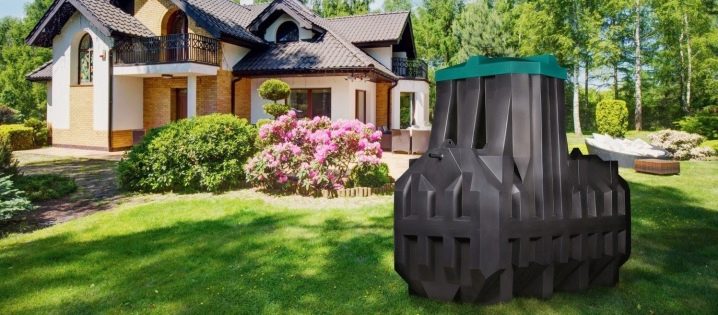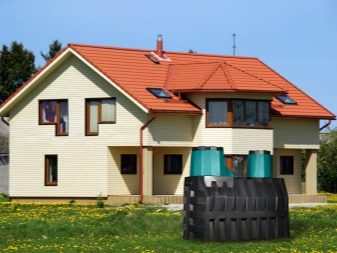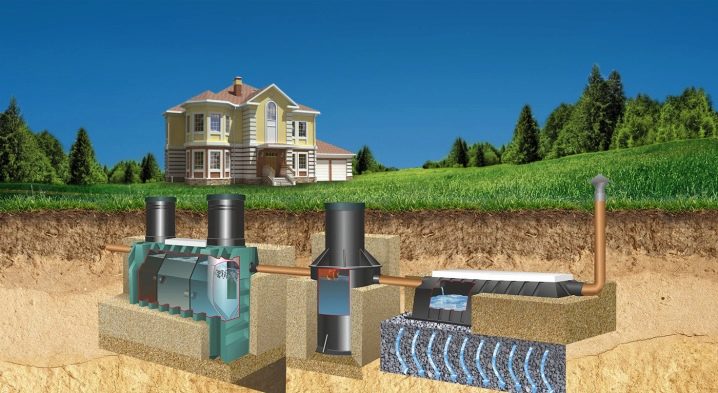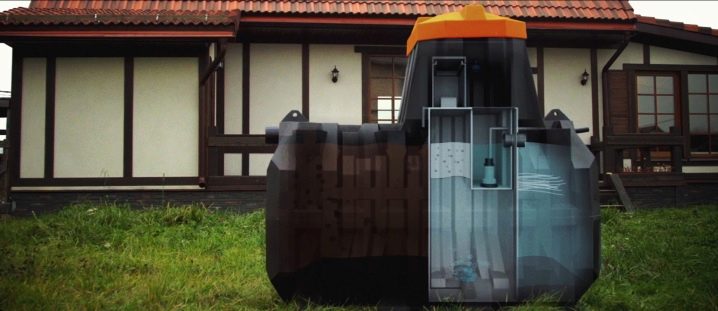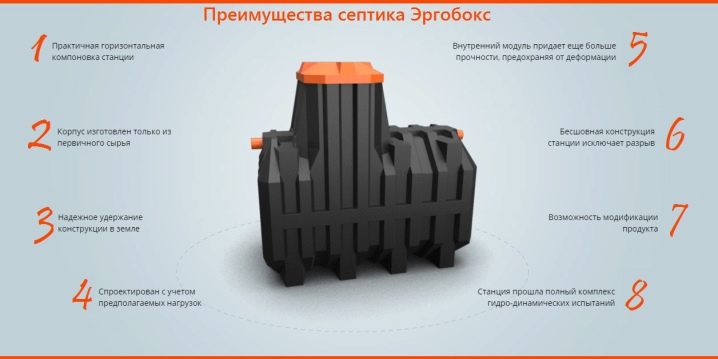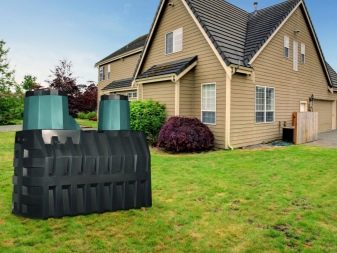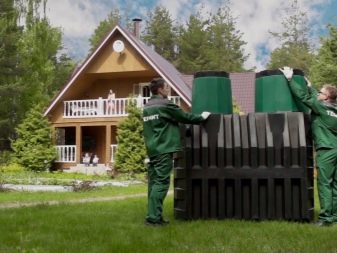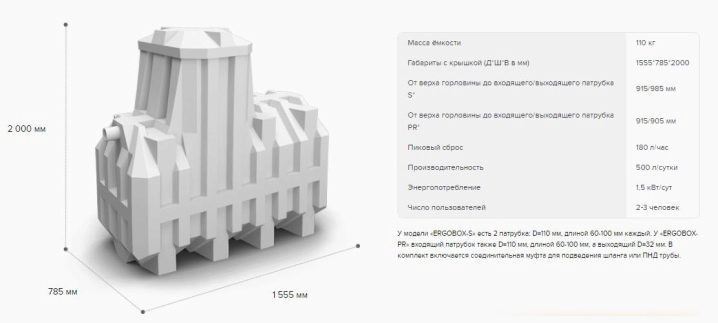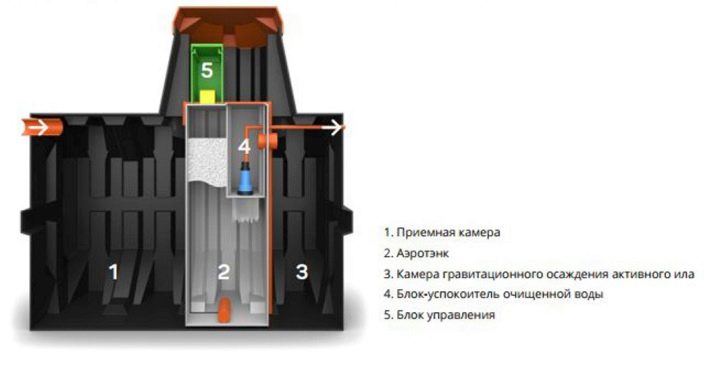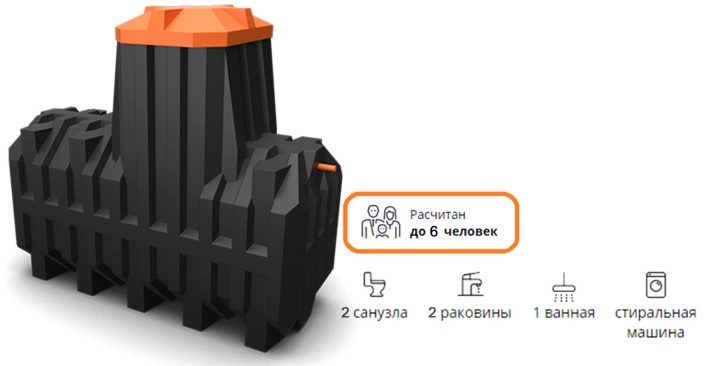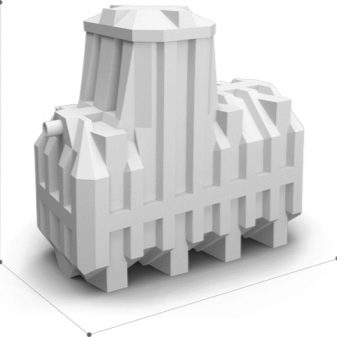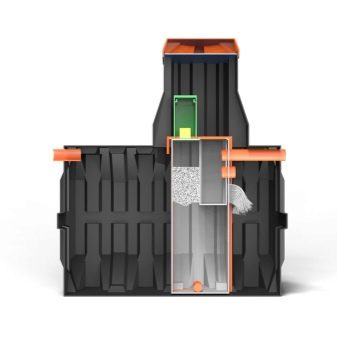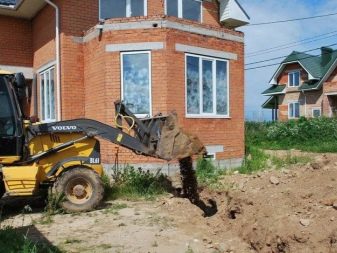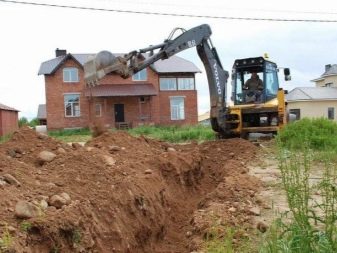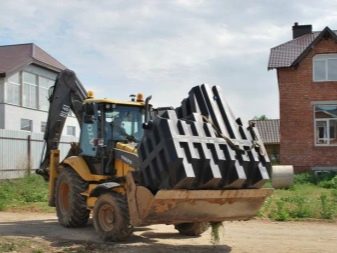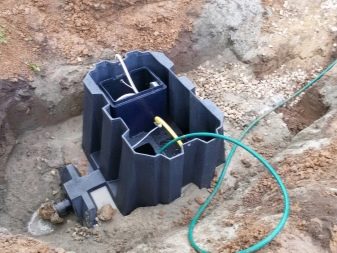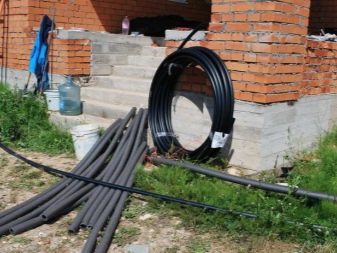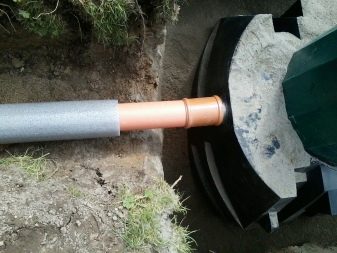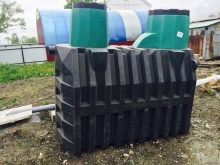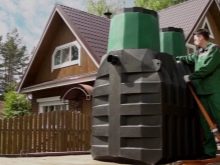Septic Ergobox: installation and subtleties of use
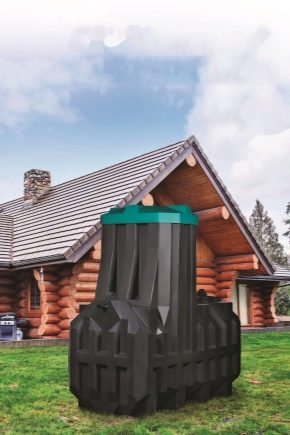
For a private house, an object in a cottage settlement or an area where there is no centralized sewage system, the solution to a global problem will be the installation of an autonomous sewer system. Among the wide range of this segment, preference should be given to a quality and proven manufacturer. Today, one of the high quality and reliable manufacturers of septic tanks is Ergobox.
Ergobox septic tanks are autonomous wastewater treatment plants., which makes the life of people in country houses and in country houses more comfortable. Due to such constructions, the problem of unpleasant odors is eliminated, especially in summer, as well as insects (mosquitoes and flies).
Special features
Each device has its own distinctive features that distinguish it from its peers.
Ergobox septic tanks also have a number of features.
- Energy efficiency. The device consumes electricity is much less than counterparts.
- The presence of biologically active components inside the structure, which contribute to the splitting of not only organic human waste, but also different types of household chemicals (soap, laundry detergent, detergent for dishes, etc.).
- Horizontal arrangement of the unit.
- The high degree of tightness of the body, preventing the ingress of sewage into the soil, which, in turn, minimizes the occurrence of infections and unpleasant odors.
In addition, the design has excellent technical characteristics that surpass many such autonomous sewer devices.
How does it work?
Any cleaning device has its own principle of operation. The work of the septic tank Ergobox is in wastewater treatment. This process involves the removal of inorganic substances, in particular, nitrogen and phosphorus compounds. The cleaning station works on the same principle as all standard city treatment plants, where cleaning takes place by saturating it with oxygen and developing aerobic microorganisms.
If we talk about the technological process of cleaning, it consists of several stages.
- 1st stage. Sewage through a special chamber into the receiver, where there is the beginning of a large cleaning process with the direct participation of activated sludge.
- 2nd stage. Passing a huge filter, the liquid is in the aero tank, where the procedure of fine bubble aeration takes place. Filled with oxygen to create a favorable environment, the liquid prevents the reproduction of microorganisms and other microbes.
- 3rd stage. In the third chamber, active gravitational sedimentation occurs, that is, particles of activated sludge first settle to the bottom, fat deposits float to the surface, and then using a unique technology, the purified liquid flows into the next compartment for subsequent sedimentation.
- 4th stage. The fluid is moved to a damper block for purified water.
Multifunctional and important is the fifth chamber, where the compressor is located, which is responsible for the smooth operation of the entire unit.
Advantages and disadvantages
Any, even the most advanced cleaning structure, is endowed with its own advantages and disadvantages.
This manufacturer of septic tanks is characterized by a large number of positive qualities of manufactured devices.
- High quality material of construction - linear polyethylene of the highest density.
- The monolithic body of the station has no seams, which provides 100% sealing.
- Resistance to corrosion.
- The high degree of strength of the components of the structure minimizes deformation and other damage to the unit.
- Resistance to mechanical damage and environmental factors.
- The optimally thought-out form of the body, which allows the liquid to be evenly distributed in the unit, allows for a high level of filtration. The level of filtration reaches 98%.
- Suitable for permanent and seasonal residence.
- Full recycling of household waste.
- Affordable price segment.
- Ease of construction.
- The simplicity of the design, allowing to make independently installation of the station.
- Innovative stiffener design, which allows the tank to be firmly fixed in the pit, preventing the installation from floating under the influence of high groundwater.
- Saving the useful surface area of the site where the unit is installed, since the entire maintenance process goes through one neck.
- Long operational period. The warranty period for the entire device is 10 years, the compressor is 5-10 years, and the membranes are to be replaced every few years.
- The use of Japanese compressors and German pumps in the cleaning station.
- Some types of products of this manufacturer are characterized by complete non-volatility, that is, even a few days after the emergency power outage, the unit can function.
- Minimize maintenance costs.
- Existence of a high mouth and stiffening ribs. The station can be installed in any kind of soil.
- The warmed cover excluding freezing of the device during the cold period.
- High performance.
- Resistance to electrical voltage drops.
- Compactness.
In addition, the cleaning device (mineralization) is performed once in 12 months, and it can be done independently, without resorting to the services of specialists.
Despite numerous advantages, the products also have negative sides, among which there are:
- dependence on power supply, which may entail the costs of creating an alternative uninterrupted power supply environment;
- a separate package with some auxiliary devices, for example, an alarm system, which will signal an overflow;
- delayed filtration of sewage effluent associated with the multi-stage process.
Nevertheless, the advantages of these cleaning stations fully cover their minor drawbacks. In addition, most of the reviews from the station owners, regardless of the model, are extremely positive, which only confirms the reliability and high quality of the Ergobox cleaning structures.
Models
The line of cleaning stations Ergobox is represented by a wide model range, but among the entire range there are popular models that are in particular demand from the buyer. These models include several copies.
- Ergobox 3. This model of cleaning station is an excellent choice for servicing a residential facility with a residence of 2-3 people. The device can recycle up to 500 liters of waste per day. This model is especially popular with summer residents who use a septic tank only in summer.
- Ergobox 4. Compact cleaning station designed to service the facility with 3-4 users. The station recycles 1 cu. m per day, the maximum discharge reaches the level of 240 l, and the depth of the supply pipe reaches 0.6 m.
By installing this model, you can connect one toilet, two sinks, shower and washing machine.
- Ergobox 6. Cleaning structure that can process up to 1.3 cu. m per day, the maximum discharge reaches 300 liters, and the depth of the supply pipe is allowed a maximum of 0.6 m. When installing this model, you can connect two toilets, two sinks, a bath and a washing machine.
The best option for an object in which 5-6 people live.
- Ergobox 8. The unit is designed to service the facility, which is home to 7-8 users. The station recycles 1.6 cu. m per day, and the largest discharge is 450 liters. Deepening is allowed up to 0.6 m. Characteristics and functionality of this model allow the connection of three toilets, four sinks, one bath and one washing machine.
These models are produced in two trim levels: with forced drainage (PR) and with gravity drainage (S).
How to install?
Thanks to the simple design, it is possible to install the septic tank Ergobox without using the services of a master. Installation of the installation involves a preliminary preparation - a number of special works, which include the determination of the type of soil and groundwater level, and how deeply the soil freezes through.
First you need to dig a pit, then trenches for the drainage and sewage pipelines, and only then you can proceed to the step-by-step installation of the cleaning system.
So, for self-installation of a septic tank Ergobox, you must perform a series of operations.
- At the very bottom of the pit for the unit you need to create a sand pillow, the thickness of which should be 25-30 cm.
- Place the structure in the pit. This is done using a crane or a special manipulator.
- Alignment design. It is necessary to level and fix the structure by means of soil.
- Connection of auxiliary equipment to the cleaning station - pipes, drainage system, etc.
- Processing pipe joints with a special sealant.
- Sealing the gap between the walls of the device and the walls of the pit.This is done with the help of soil mixed with sand, which fills the empty space. The procedure must be done in stages.
- Connection of pipeline and drainage system.
- All sections of the compound are treated with a hermetic means.
- Re-compaction of space using soil.
- Connection to sanitary unit of a residential facility. The unit is ready for operation.
Despite the simplicity of the installation process, you must first familiarize yourself with all the intricacies of the connection and functionality of the device.
How to use?
In order for the cleaning unit to serve for a long time and without failures, and the sewage system does not create problems, it is necessary to carry out preventive actions:
- wash the compressor air filter;
- full cleaning of the structure once a year;
- 3-4 times a year to clean the hair;
- it is desirable to preserve the unit for the winter period;
- loading new bacteria if necessary.
In addition, to prolong the operational period of the structure, its proper use is necessary. Also important is the correct installation of the unit, since the main reason for the rapid breakdown of the cleaning structure is often the wrong installation.or installation errors.
In more detail about the design features of the septic tanks Ergobox will tell the following video.
